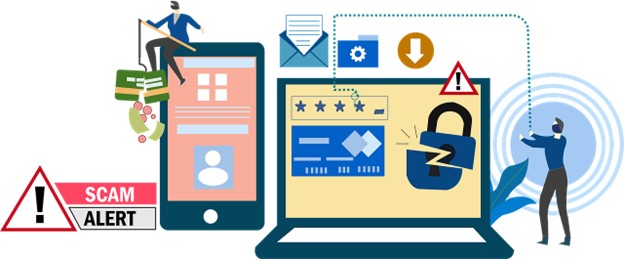AI and Trading Education: Cliquall Introduces Revolution in Learning How to Trade
October 1, 2025Belvarium ($BLV) – A Rising Star in the Next Wave of Crypto Innovation
October 2, 2025Phishing in 2025 is not what many remember from years past. No longer just poorly spelled emails pretending to be from banks, phishing in 2025 now uses artificial intelligence to generate realistic messages, cloned websites that look identical to legitimate ones, fraudulent QR codes placed in public spaces, and phishing texts that mimic familiar voices or apps.
Losses from online scams are rising sharply. Recent figures show that the average data breach tied to phishing now costs organizations about US$4.88 million. Business Email Compromise alone accounted for over US$2.7 billion in losses during 2024.

Credential theft has surged by more than 160 percent compared to earlier periods, and attackers are finding ways to bypass multi-factor authentication. Many phishing texts are carefully designed to impersonate delivery services, payment providers, or even government agencies, which makes them incredibly convincing.
This rise in sophistication means that even security conscious users are vulnerable. Smishing, which is phishing carried out through SMS, is also on the rise, further widening the attack surface for fraudsters.
Online Justice’s Response and What Happens After a Scam
In a recent announcement, Online Justice explained how it is stepping up to help victims of these more complex scams. The firm tracks down malicious links, collects evidence such as messages and screenshots, and works with law enforcement or banks where possible to try to recover lost funds. It offers a structured support path so that people who have been scammed are not left feeling isolated.

Online Justice emphasizes that people who fall for advanced phishing scam operations are not careless or foolish. The sophistication of these attacks has increased to such an extent that even experienced users can be deceived. The company’s system combines expert analysts with technical tools such as blockchain tracing and domain registrar analysis to reconstruct the scammer’s digital trail.
If someone realizes they have been scammed, Online Justice recommends immediate steps. Stop further interaction with the phishing text or email, collect all possible evidence including screenshots and message histories, and contact the bank without delay.
Victims should also change passwords, report the incident to local authorities, and consider working with professional recovery services like those provided by Online Justice to improve the chances of recovering lost assets.
Why Victims Should Speak Up, Not Hide Shame
Phishing in 2025 has reached a level where it can feel personal, leaving victims shocked and embarrassed. Many hesitate to report what happened out of fear of being judged. Online Justice stresses that this silence benefits only the fraudsters. Falling for a phishing scam is not an indication of intelligence or awareness but rather a reflection of the extraordinary resources scammers invest in making their messages appear genuine.
By acting quickly, documenting evidence, and seeking support, people increase their chances of minimizing damage. Public reporting also benefits the wider community, allowing experts to track patterns, shut down fraudulent websites, and warn others before they are targeted.
